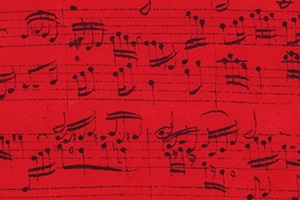SONGWRITER
The Bells of Rhymney: two major modal modes of famous protest song

Pete Seeger LP cover
Country: USA
The Bells of Rhymney is one of the best-known protest songs of the past century, first recorded in 1958 by the American folk singer and social activist Pete Seeger. All three song verses are based on iconic stanzas by Welsh poet Idris Davies published in 1938.
For his poem, Davies used a pattern from the famous Oranges and Lemons—traditional nursery rhyme, folksong, and singing game that refers to the bells of several English churches. Instead of the church names, Davies introduces South Wales places affected in the miners' strike against the decrease in wages and simultaneous increase in the workday hours. The miners' initiatives were taken up by most of the unions in England, which led to the largest protest in the history of the country known as the 1926 General Strike.
The most famous recording of The Bells of Rhymney was cut by the California folk-rock band the Byrds in 1965. This cover later inspired the versions from Bob Dylan and Cher, while George Harrison used only the guitar riff for The Beatles' If I Needed Someone.
Listen to Pete Seeger's The Bells of Rhymney performed by the Byrds:
Compositionally, the Byrds' rendition of The Bells of Rhymney follows the classical tonal theory and reveals a curious interweaving of two major modal modes—Lydian and Mixolydian. In the harmonic analysis of the song chord chains, the scale degrees (denoted with Roman numerals) show the following progressions:
- the pairs of lines that open and close the stanzas are based on the progression containing all three major chords in D Lydian: D–G–D–E–D or I–V–I–II–I;
- the two pairs of inner lines are accompanied by the chord chain in D Mixolydian: D–C–Em–A or I–VII–ii–IV.
These chord progressions appear in the first and third verses, whereas the second verse is accompanied by the following variations:
- D–G–D–E–D or I–V–I–II–I in Lydian mode for lines 1-2;
- D–Bm–C–Em–A or I–vi–VII–ii–IV in Mixolydian mode for lines 3-4;
- D–Bm–G–E–D or I–vi–V–II–I in Lydian mode for lines 5-6;
- D–G–D–E–D or I–V–I–II–I in Lydian mode for lines 7-8.
The rather atypical cadenzas in the chord chain finals involve the E major supertonic chord in D Lydian and the Em minor supertonic chord in D Mixolydian and serve as a harmony for the rendition of the South Wales locations. In a way, it succeeds in imitating the persistent stroke of a bell's clapper.
Learn more about the structure of these diatonic musical modes explained through the harmonic analysis of popular songs in the following articles:
- Popular songs using Lydian mode
- Reelin' In the Years: the tandem of effective lyrics and one of the best guitar solos of all time
- 7 songs featuring Mixolydian mode
- Seven Seas of Rhye: song of imaginary land brought to life by Ionian and Mixolydian modes



